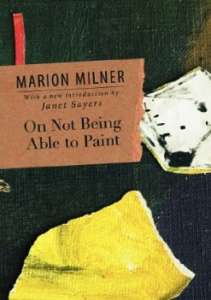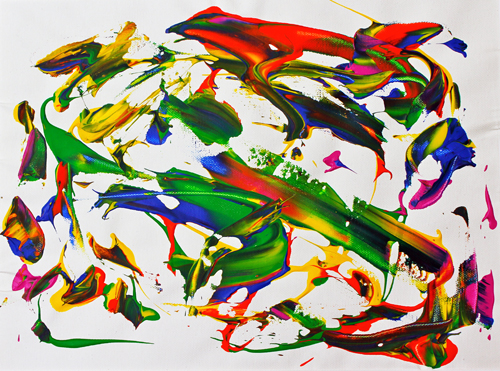Creativity is more complex than the maps we fashion to understand it. “There being no known method from the known to the unknown,” as the narrator of James Joyce’s über-imaginative Ulysses said, ascertaining what facilitates creativity might seem like a fool’s quest.
Psychoanalyst Marion Milner’s On Not Being Able to Paint, a neglected classic in the literature on the creative process, is an illuminating examination of an individual’s attempts to paint and some of the forces that interfere with this effort. For Milner, ordinary life is characterized by a specific kind of thinking and action that is largely deliberative and goal-oriented, which emphasizes being practical and using willpower. What she discovered while painting and writing this book, originally published in 1950, was that creativity beckoned from another direction, one characterized by both an openness to the external world and a surrender to spontaneous urgings of inner creative activity and her own being.
She painted genuine brushstrokes, rather than inauthentic, imitative ones, when she integrated two seemingly opposed ways of living: a “masculine” state of “doing” and a “feminine” one of “being.” She found that in moments of creation, there was both an active striving and a surrendering to spontaneity. Shifting between being merged with and differentiated from what she was doing fostered a passionate and genuine responsiveness to both her inner feelings/images and the canvas, which led to painting that was authentic and vitalizing.


What is most inspiring about Milner’s work is not her insights about the creative process—generative as they are—but her courage and integrity in relinquishing control and allowing the process to emerge so that she embodied it. Showing what the creative process is—even for one person—may be more radical and important than trying to say what it is.
If ever there was a person discouraged from seeing himself or herself as potentially creative, it was me. The consistently negative feedback I received early on in school convinced me that creativity was the province of other people who were gifted—be they painters, potters, or pianists. I could appreciate what they did, but I didn’t think I could ever do anything creative.
I subscribed to this delusion for many years.
“Freud democratized genius,” as sociologist Philip Rieff aptly noted, “by giving everyone a creative unconscious.” We are all night-shift artists, I sometimes say in psychotherapy, because each evening we fashion phantasmagorical dreamscapes that surrealist artists might be jealous of.
No one was more stunned than I was when I painted “Free Association in Motion” (see image above), which was an unexpected by-product of studying with an artist who was teaching me about different artistic media. For me, the creative process entailed being wholeheartedly and un-self-consciously immersed in the moment, alert and relaxed, two hands moving at once in unpredictable ways. But if I insist that that Zen-like state of self-enhancing self-forgetfulness is indispensable to creativity, other vital aspects of the creative process might get eclipsed. And that’s why none of our personal experiences of creativity should be held up as a model for anyone else.
Creativity not only resists final and definitive descriptions; it is also richer than our accounts of it. And what we most need, I suspect, are not only textured descriptions but actual demonstrations. Milner’s evocation of her own creative process is a salutary reminder of the capacity we all have and all need to find a pathway to. And that, I trust, will encourage like-spirited people to study their own experience and seek out those conditions that help their creativity flourish. That will enable us to be like a prepared sail that allows the winds of life—people, experiences, and our own unconscious images, messages, and dreams, at night and during the day—to touch and move us in unforeseen directions. And it will foster the capacity to contribute our unique brushstrokes to the canvas of life.
Then we will be the artists of our own lives.



